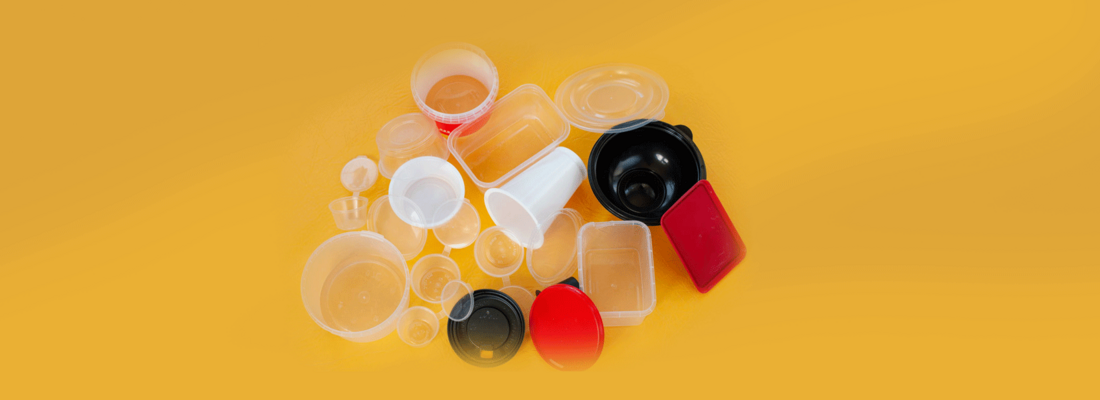The production of packaging
Plastic packaging is manufactured using two different processes: The injection moulding process and thermoforming.
In the injection moulding process, also called injection moulding, the respective plastic material is liquefied (plasticised) and injected under pressure into a mould, the so-called injection moulding tool. Through cooling or a cross-linking reaction, the material in the mould becomes solid again and can be removed as a finished part after opening the mould. The cavity of the mould determines the shape and surface structure of the finished part. Injection moulding allows an almost free choice of shape and surface structure and is considered the most widespread process for the mass production of plastic parts of all kinds, not least because of its cost-effectiveness.
Thermoforming, often also referred to as deep drawing, is a process for forming thermoplastics under the influence of heat and with the aid of compressed air and vacuum. Depending on the production plant, the semi-finished plastic product is fed to the moulding machine in the form of a film (thin semi-finished product) or sheet (thick semi-finished product). In a heating station, the semi-finished product is heated on one or both sides, which softens it. The heated semi-finished product is carefully pulled apart to prevent sagging. In the mould station, it is fixed with the help of a clamping frame; a pre-stretcher and the thermoforming mould already provide a rough contour. Using compressed air from one side and vacuum from the other, the semi-finished product is pressed quickly and firmly against the water-cooled contour of the aluminium mould. Small holes or slits allow the air to escape between the semi-finished product and the tool. The cooled, now solid semi-finished product is separated from the moulding tool and then punched out.
The production of films
There are also two processes for the production of plastic films: Blown film extrusion and calendering.
In blown film extrusion, the raw material is first heated and melted in an extruder. Under pressure, the molten plastic mass is then forced through the extrusion head, a ring-shaped nozzle. A melting tube forms, which is inflated with air and simultaneously cooled by cool air from the outside. The plastic bubble expands and a thin plastic film is formed. During this phase of the process, the width and thickness of the film are determined. They depend on the size to which the tube is inflated. Once the tube of film has cooled, it is flattened by squeeze rolling and then automatically wound onto large rolls. Packaging films produced by film extrusion account for a significant proportion of the plastic packaging produced worldwide.
In calendering, the plastic material is also heated in an extruder and melted into a liquid mass. This molten plastic mass is then passed between two large, heated rollers, the so-called calender rollers. The distances between the calender rollers can be adjusted depending on the desired thickness of the film. The molten plastic mass is evenly distributed and compacted between the rollers. During this process, the rollers cool the film, giving it its final strength and surface structure. The finished plastic film is then pulled on a take-off device and wound onto large rolls.









